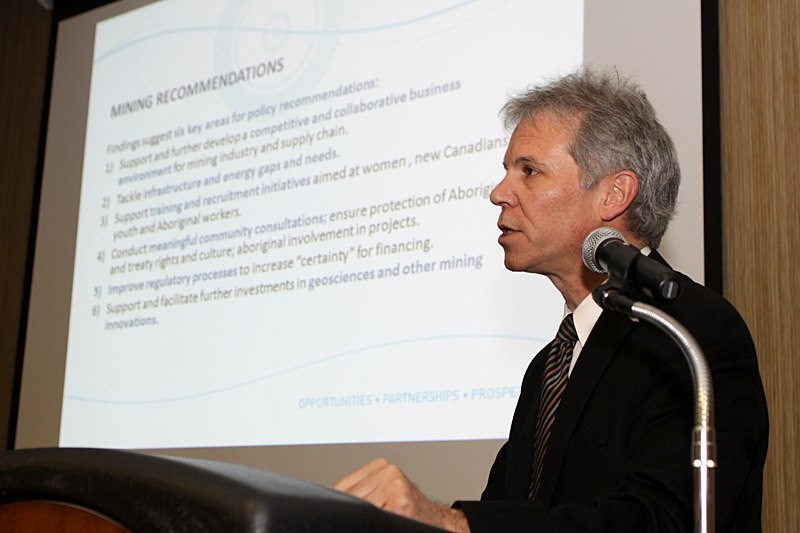The city needs to address gaps in infrastructure, energy and education if the region expects to benefit from an expected and upcoming mining boom.
Those were the main recommendations found in the city’s mining readiness strategy. The City of Thunder Bay released the draft final report of the strategy at a media conference Friday at the Victoria Inn.
The report contained about 50 recommendations and used 10 advanced mining projects as a base to help create a prediction of the economic impact to the region as well as to look at the shortcommings that would need to be addressed.
The strategy will act as a priority guide for the city as it attempts to meet the increasingly tight deadline in order to meet the demands for the hundreds of mining projects.
Program manager for the strategy Stephen Lindley said infrastructure, energy and training were the top imperatives that need to be addressed soon.
“There’s a lot of things upstream and upfront that needs to happen,” he said.
“Imperatives are on infrastructure and training. Of the 10 projects we’re looking at, two or three of them are already under some kind of construction.
“The Ring of Fire is a very important part of the mining sector growth in Northwestern Ontario but there’s a lot of growth in and around the gold industry. There are many other mining projects besides Ring of Fire. If we look at phasing, Ring of Fire is massive and we will need all the time that we have.”
Some of the first steps in accomplishing these goals include establishing high voltage power into Red Lake and Pickle Lake in order to wean communities off diesel fuel. Another early step would be to create stronger partnerships between the federal and provincial governments and to allow private companies to move ahead with infrastructure projects.
Lindley said that step is already underway as the federal government already appointed FedNor Minister Tony Clement as the Ring of Fire point man.
But Lindley stressed that time was in short supply.
“The 10 projects that we’re talking about are all predicting that they will be in construction within the next two years,” he said. “They all predict that they will be in operation within the next three to four years.”
In order to meet the labour demand, Lindley said they are creating online courses. The goal is to give students opportunities to learn without having to travel long distances.
Lindley said they’re goal is also to increase the Aboriginal Grade 12 enrolment so they have the requirements they need to get further skills training.
“We’re predicting thousands of jobs being created every year just by these 10 projects,” he said.
The recommendations also highlighted the need and importance of First Nation involvement; allowing communities to take ownership in the various projects.
The report also challenged Fort William First Nation and the city do more to attract people to stay within the region.
Fort William First Nations Chief Peter Collins said it’s tough to advertise his community as a place to live.
“It’s hard enough to get our own community members home,” he said.
“We have close to 200 to 300 people waiting to move back into our community right now because of the housing shortage we have in our community. Maybe in the future as we start to build infrastructure that will happen.”
Collins called the strategy a work in progress but a great step in the right direction.
The strategy also asks for a city mining coordinator.
Mayor Keith Hobbs nominated John Mason, the project manager for the Community Economic Development Commission, to fill that role.
Hobbs said he was encouraged by what he saw. One of the more pressing issues included the need to continue the conversion of the Thunder Bay Generating Station. The conversion of the coal plant to natural gas was stopped last year.
Hobbs said the city needs the plant converted.
“Time for talk is over,” Hobbs said. “The conversion is a part of this process in order to bring the energy to these companies. If we don’t get it soon I’m going to start screaming as mayor about it. The feds, the province and First Nations and municipalities need to get together and let’s get an action strategy.”
The city will give the public a chance to give input on the strategy on April 9 and April 15. The first meeting will be held at the Thunder Bay Community Auditorium with the second at the Fort William First Nation Community Hall.
Both meetings start at 5:30 p.m. and are expected to wrap up around 9 p.m.
The final report will be presented at the Northwestern Ontario Municipal Association conference at the end of April.
